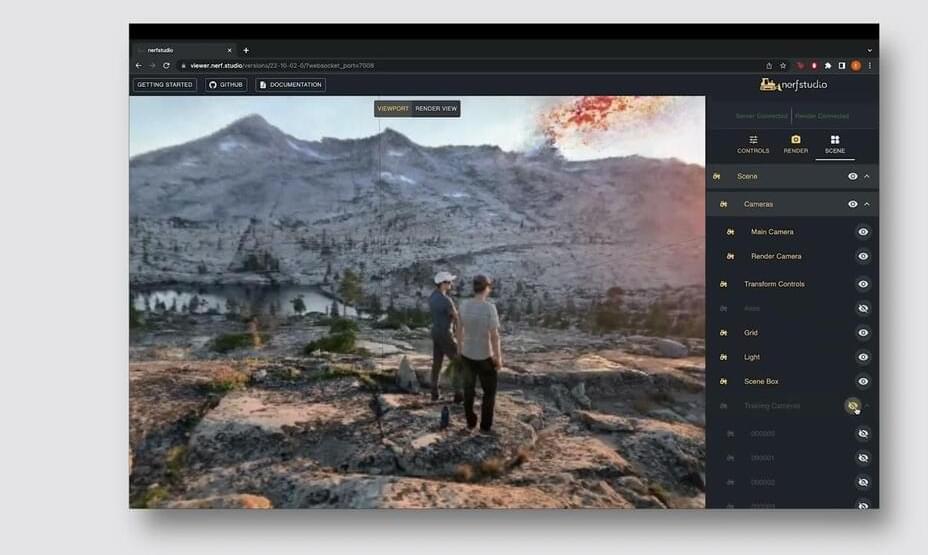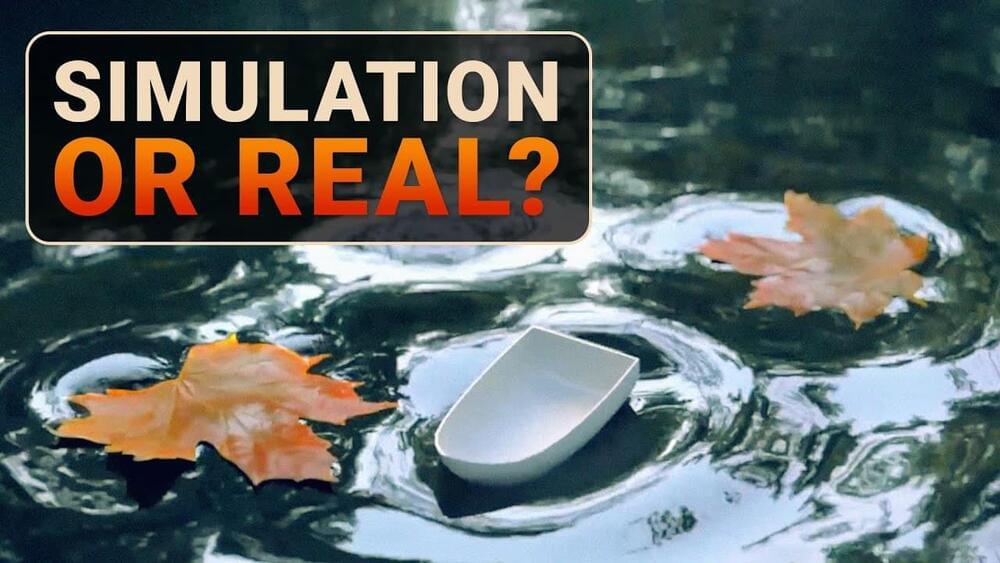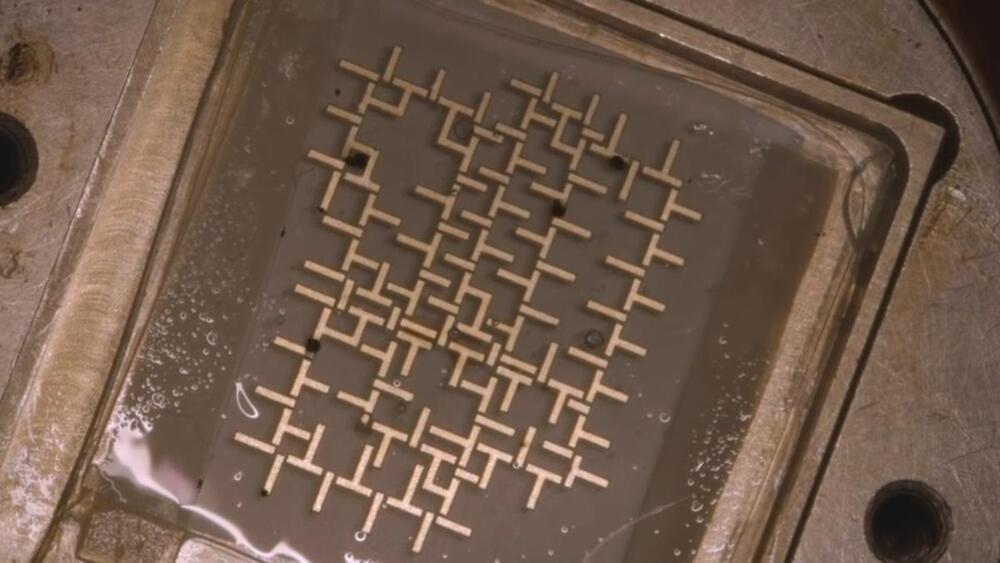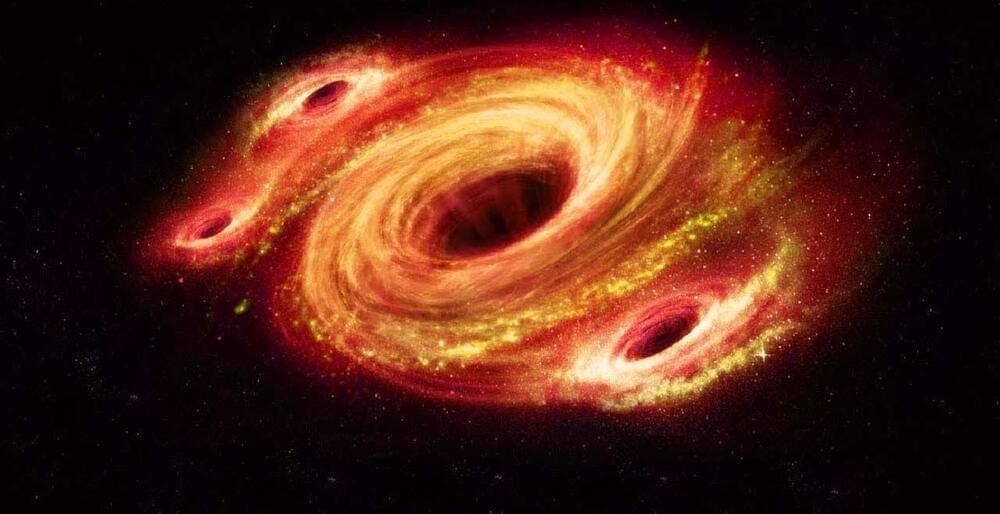New to nerfstudio? Here we walk you through a step-by-step process on how to turn your favorite capture into a trendy 3D video in minutes.
Github: github.com/nerfstudio-project/nerfstudio.
Discord: discord.gg/uMbNqcraFc.
Twitter: @nerfstudioteam.

New to nerfstudio? Here we walk you through a step-by-step process on how to turn your favorite capture into a trendy 3D video in minutes.
Github: github.com/nerfstudio-project/nerfstudio.
Discord: discord.gg/uMbNqcraFc.
Twitter: @nerfstudioteam.

❤️ Check out Lambda here and sign up for their GPU Cloud: https://lambdalabs.com/papers.
📝 My paper “The flow from simulation to reality” with clickable citations is available here:
https://www.nature.com/articles/s41567-022-01788-5
📝 Read it for free here! https://rdcu.be/cWPfD
Continue reading “Wow, A Simulation That Looks Like Reality! 🤯” »
Science-fiction author Neal Stephenson predicted cryptocurrencies and virtual worlds — even coining the term metaverse — in his 1992 novel Snow Crash. Now, 30 years later, he is combining the two ideas by launching a blockchain-powered open metaverse. It is a move that sets him against big tech firms with their own metaverse plans, so why is he doing it and what even is an open metaverse?
Developers have pushed various versions of the metaverse for decades, but nothing has stuck.
Lamina1 was contacted for comment.
Continue reading “Sci-fi author Neal Stephenson wants to build a metaverse open to all” »

Circa 2015 face_with_colon_three
From driving water wheels to turning turbines, waterhas been used as the prime mover of machinery and the powerhouse of industry for many centuries. In ancient times, the forces of flowing water were even harnessed to power the first rudimentaryclocks. Now, engineers at Stanford University have created the world’s first water-operated computer. Using magnetized particles flowing through a micro-miniature network ofchannels, the machine runs like clockwork and is claimed to be capable ofperforming complex logical operations.
Continue reading “Engineers create a computer with a water droplet processor” »
Circa 2014 face_with_colon_three
A liquid hard drive containing a suspension of nanoparticles could be used to store impressive amounts of data: 1 terabyte per tablespoon.
Researchers from the University of Michigan and New York University have been simulating wet information storage techniques which uses clusters of nanoparticles suspended in liquid. These clusters of particles can store more data than conventional computer bits which have just two storage states: 0 and 1. The clusters of particles work a bit like Rubik’s Cubes to reconfigure in different ways to represent different storage states. A 12-particle memory cluster connected to a central sphere can have almost eight million unique states, which is equivalent to 2.86 bytes of data.
Continue reading “Liquid hard drive could store 1TB data in a tablespoon” »
The same four chemical building blocks behind almost all life on earth could one day be used replace traditional computer storage.

WEIGHT IS ONE of the biggest banes for car designers and engineers. Batteries are exceedingly heavy and dense, and with the internal combustion engine rapidly pulling over for an electric future, the question of how to deal with an EV’s added battery mass is becoming all the more important.
But what if you could integrate the battery into the structure of the car so that the cells could serve the dual purpose of powering the vehicle and serving as its skeleton? That is exactly what Tesla and Chinese companies such as BYD and CATL are working on. The new structural designs coming out of these companies stand to not only change the way EVs are produced but increase vehicle ranges while decreasing manufacturing costs.
Continue reading “A New Approach to Car Batteries Is About to Transform EVs” »
Prof. Ehud Pines (pictured above) is an iconoclast. What else can you call a scientist who spent 17 years doggedly pursuing the solution to an over 200-year-old chemistry problem that he felt never received a satisfying answer using methods no other scientist thought could lead to the truth? Now, he is vindicated as the prestigious Angewandte Chemie journal published a cover article detailing how his experiment was replicated by another research group while being x-rayed to reveal the solution Prof. Pines has argued for all along.
The question at hand is: How does a proton move through water? In 1,806, Theodor Grotthuss proposed his theory, which became known as the Grotthuss Mechanism. Over the years, many others attempted an updated solution realizing that strictly speaking, Grotthuss was incorrect, but it remained the standard textbook answer. Until now.
Prof. Ehud Pines suggested, based on his experimental studies at Ben-Gurion University of the Negev in the Department of Chemistry, together with his PhD student Eve Kozari, and theoretical studies by Prof. Benjamin Fingerhut on the structure of Prof. Pines’ protonated water clusters, that the proton moves through water in trains of three water molecules. The proton train “builds the tracks” underneath them for their movement and then disassembles the tracks and rebuilds them in front of them to keep going. It’s a loop of disappearing and reappearing tracks that continues endlessly. Similar ideas were put forward by a number of scientists in the past, however, according to Prof. Pines, they were not assigned to the correct molecular structure of the hydrated proton which by its unique trimeric structural properties leads to promoting the Grotthuss mechanism.

https://youtube.com/watch?v=paUPly9gAIo
In other words, the study suggests black holes might actually burrow into a kind of multidimensional object called a brane, and give birth to an entirely new universe in another colossally big bang.
